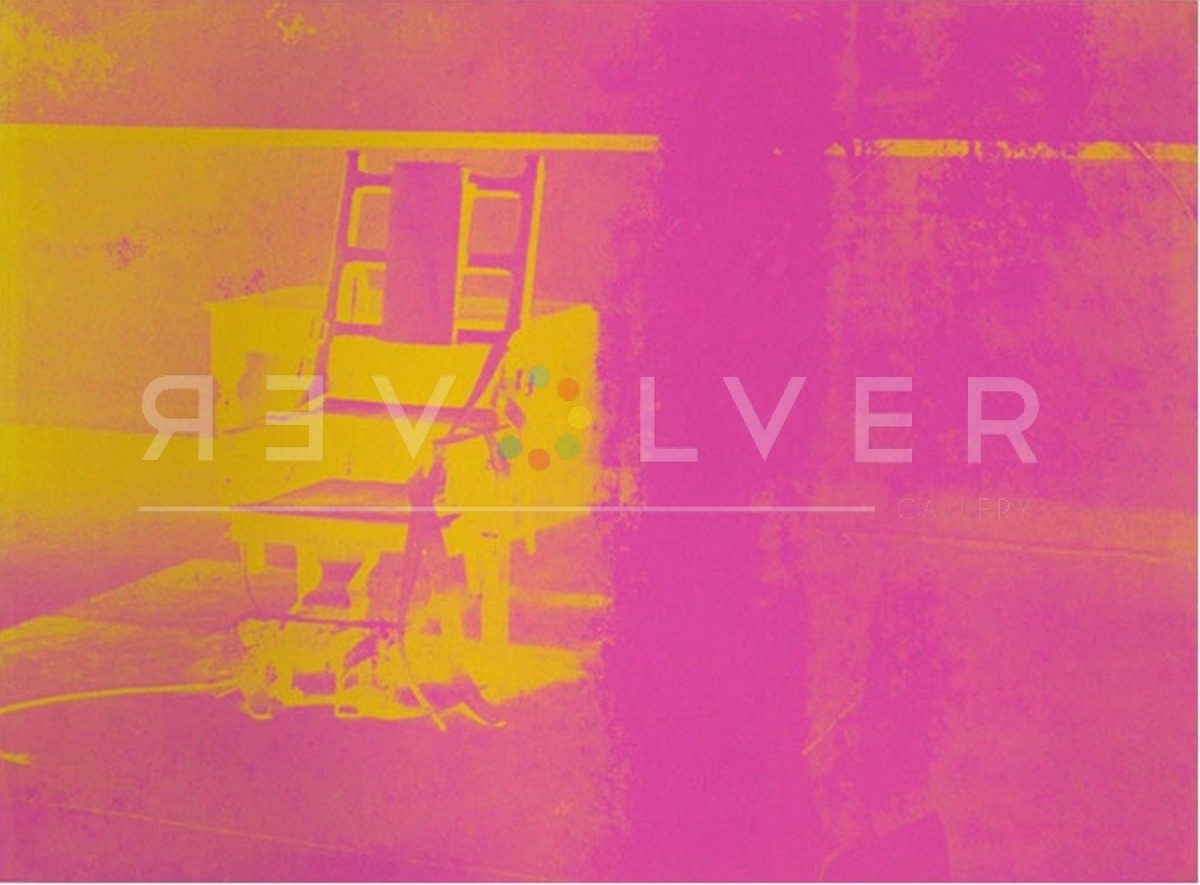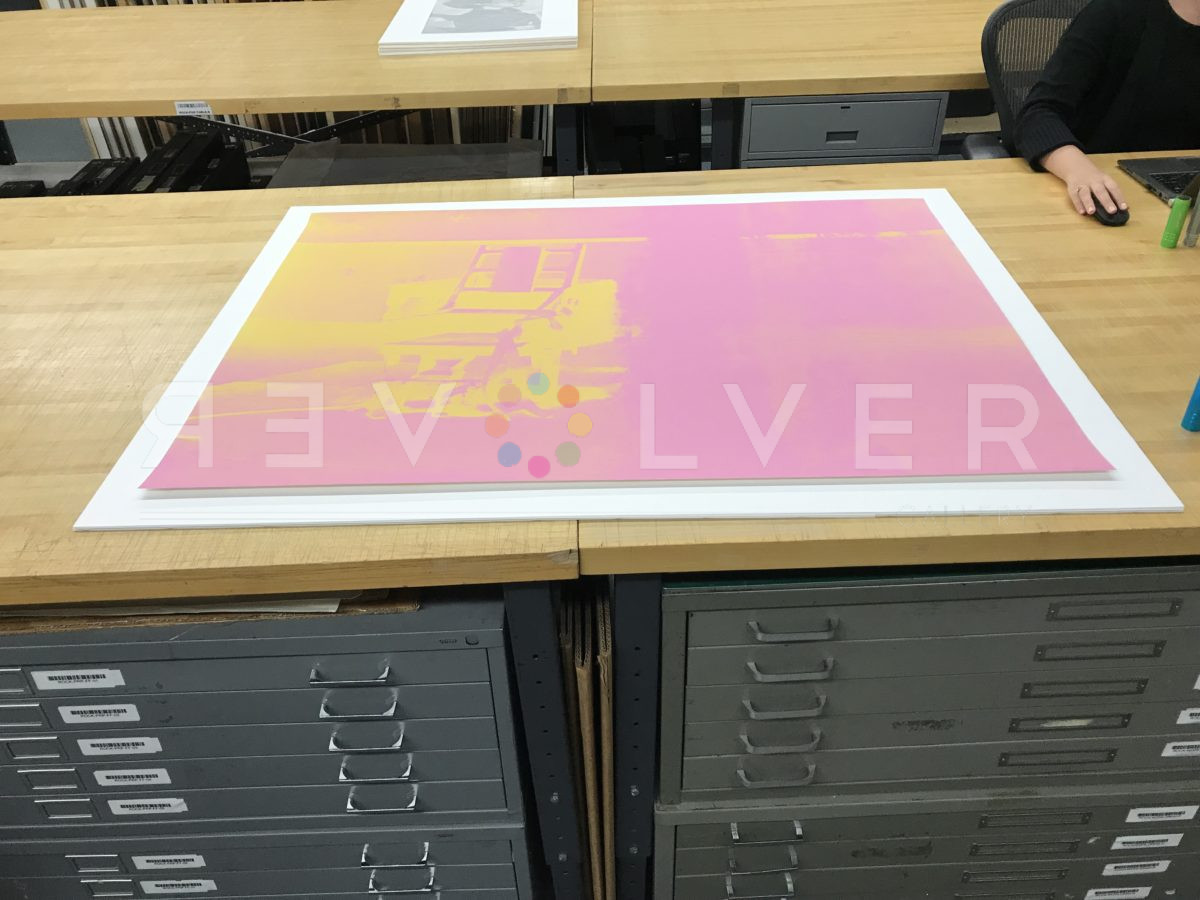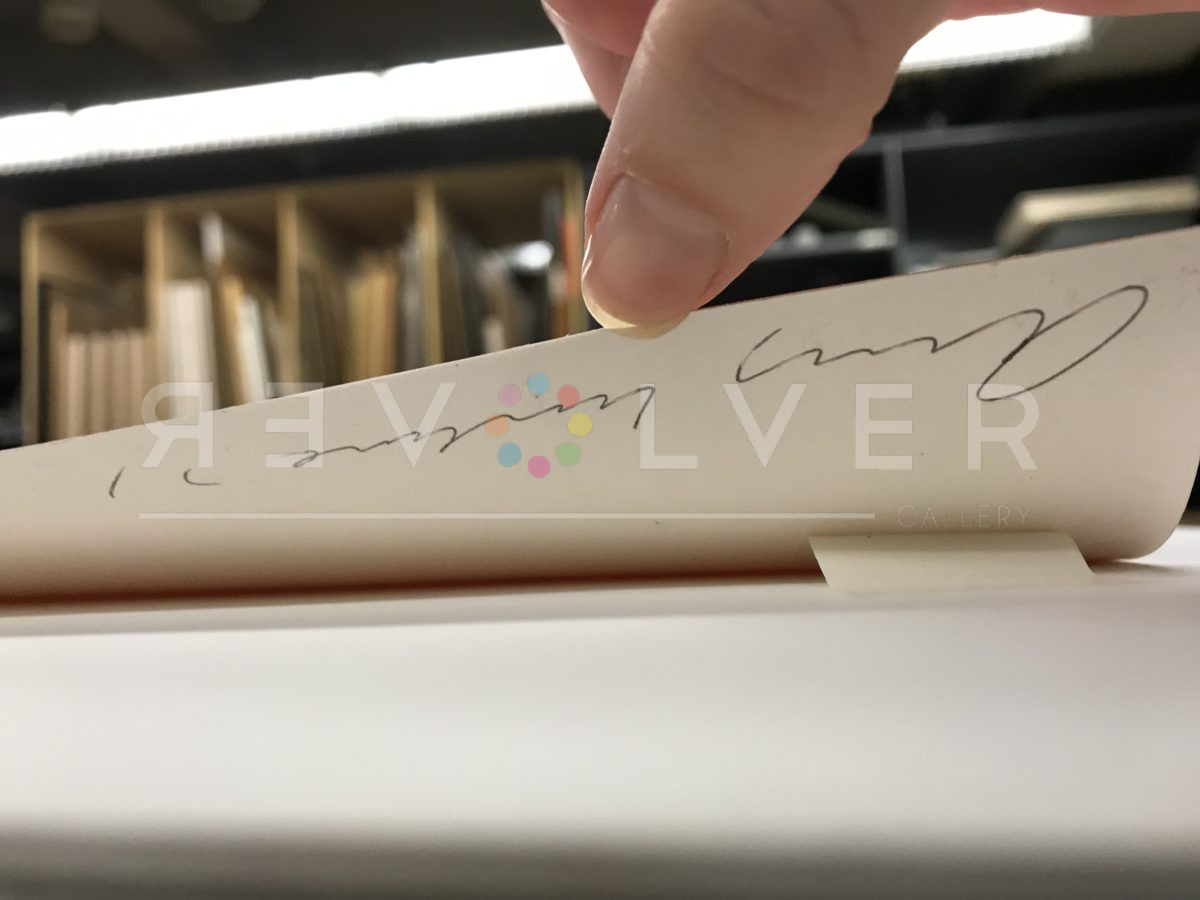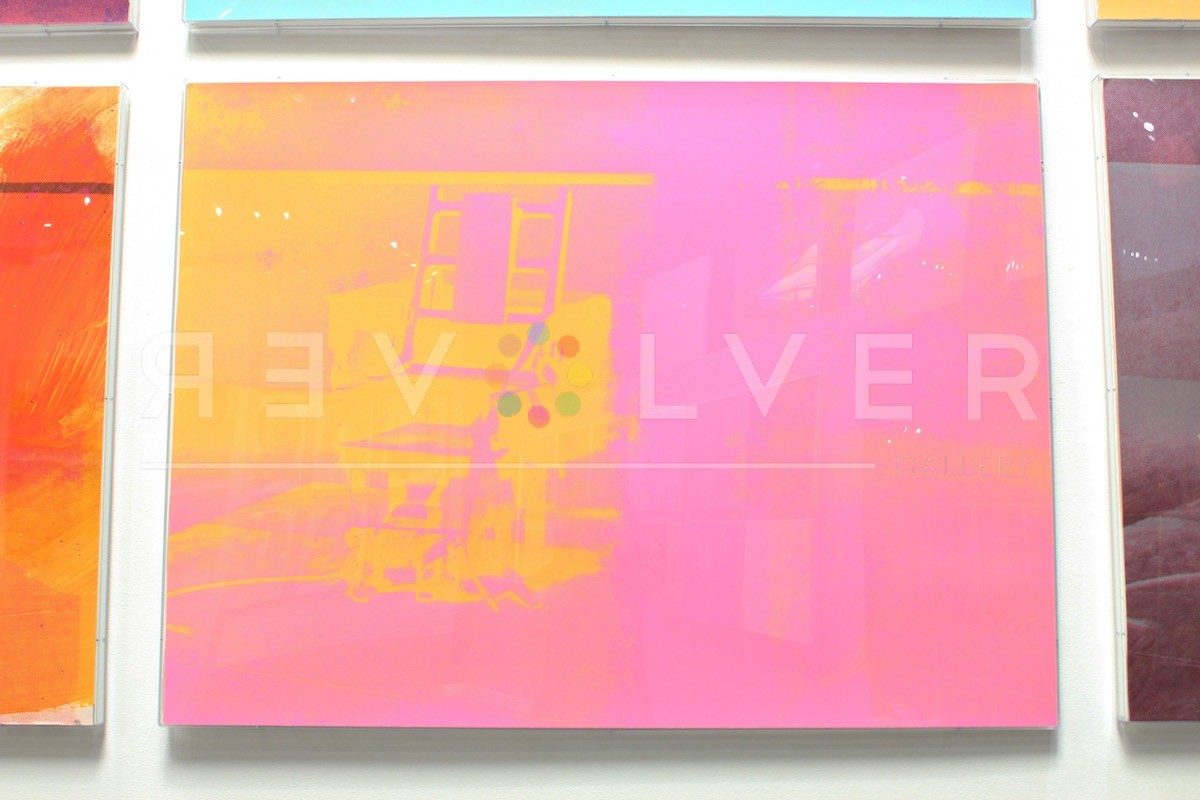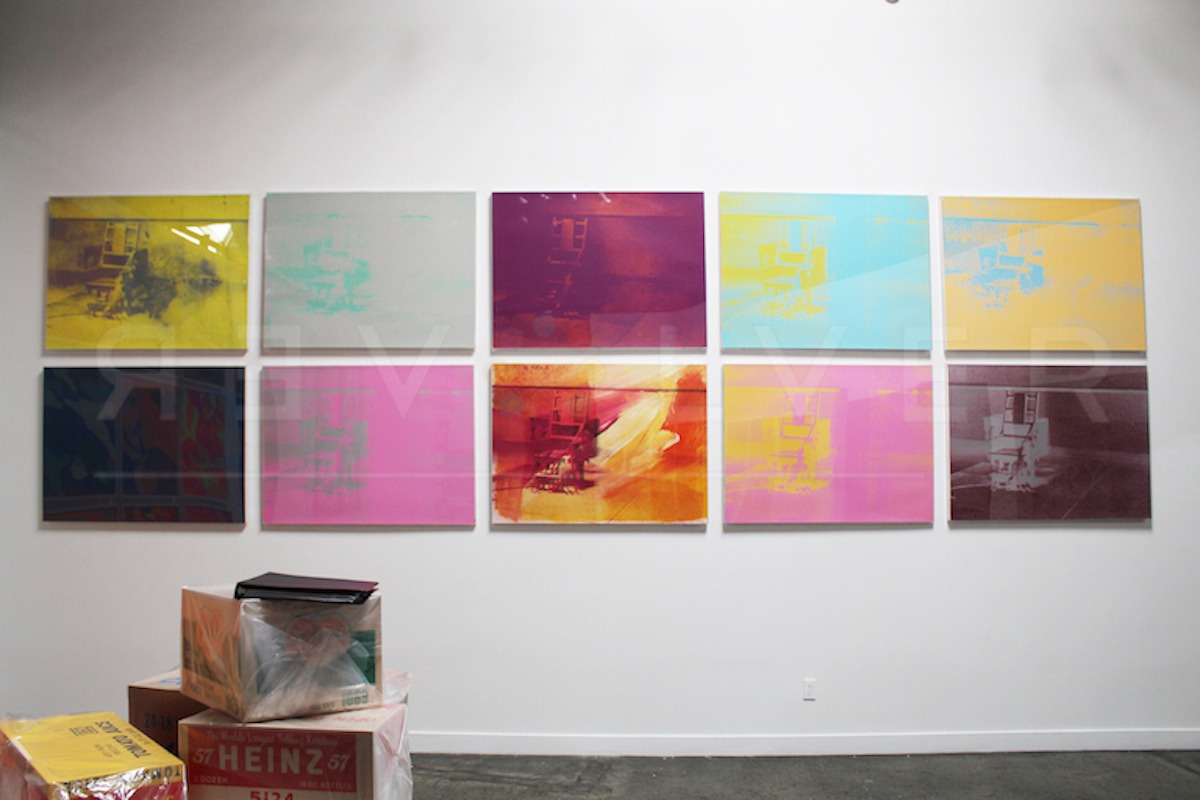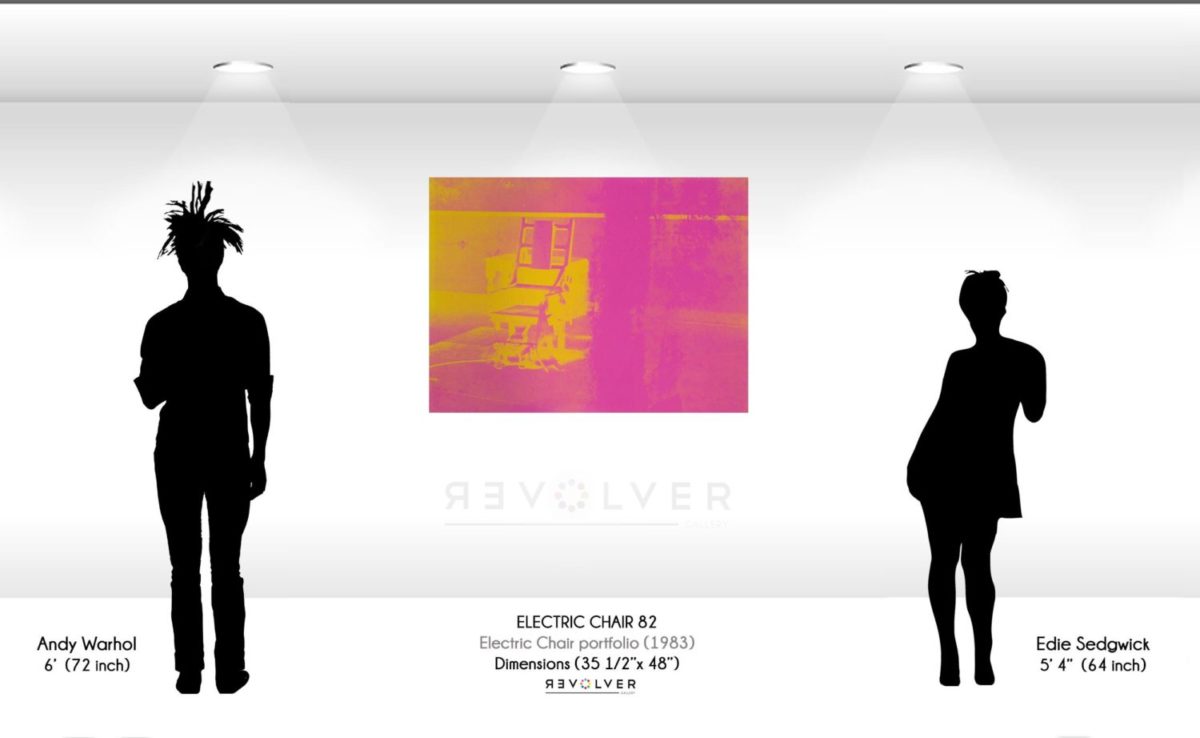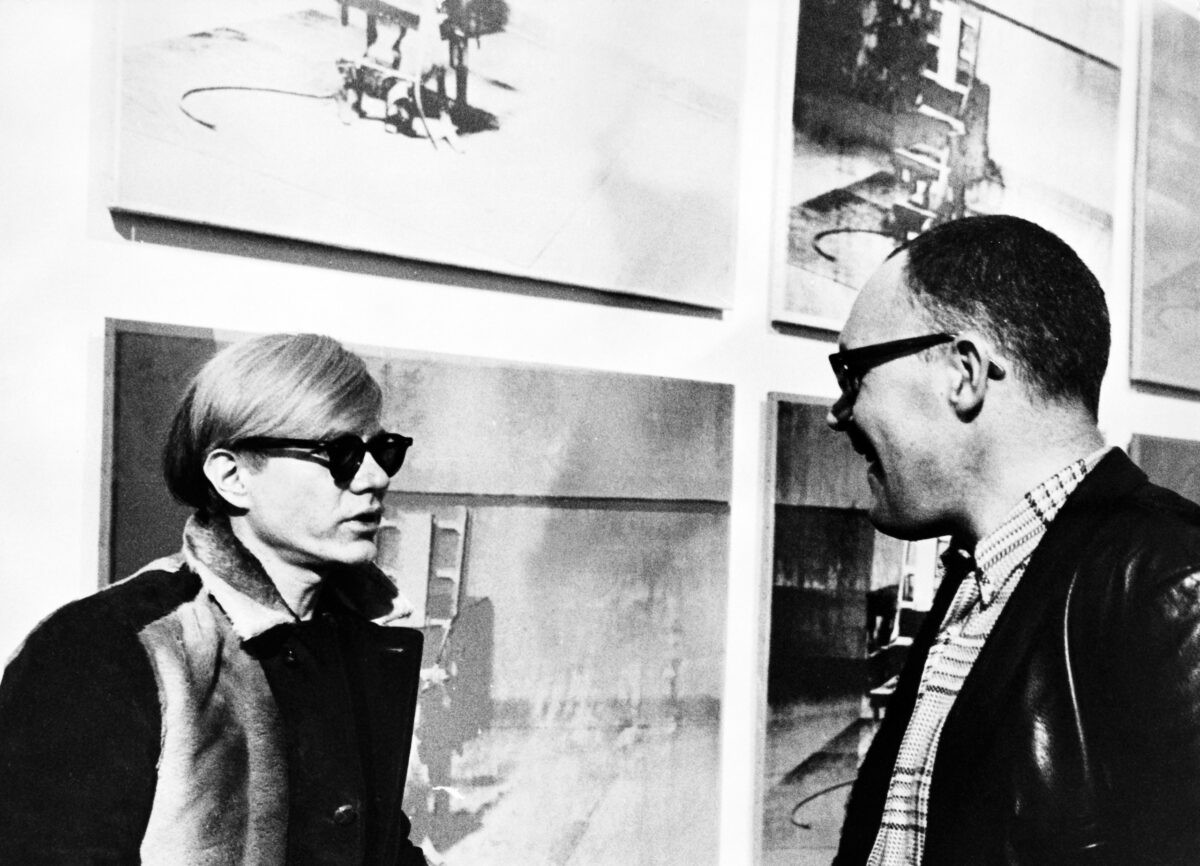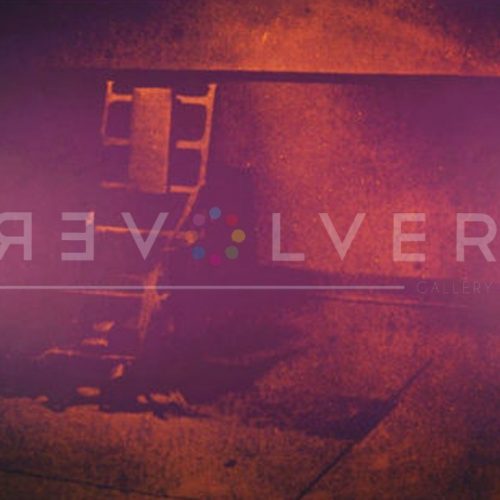Electric Chair 82 by Andy Warhol is a screenprint from the artist’s notorious Electric Chair portfolio (1971). In the early 1960s, Warhol began creating prints of the electric chair as part of Death and Disaster, a loose collection of artworks depicting macabre images of death and violence, mostly appropriated from newspaper clippings. The death penalty was the subject of uproarious debate in New York City, and Warhol’s Electric Chair (1964) was met with both controversy and intrigue. He created a few more, mostly monotone Electric Chairs through the sixties, until publishing the Electric Chairs portfolio in 1971. Opposed to the earlier creations, Electric Chair 82 and other works in the series vary greatly in color and saturation.
The ghostly Electric Chair 82 exhibits the instrument of death in an arresting scope of colors that scream of Andy’s signature, bright style and his off-kilter sense of irony. From a 1953 press photograph, Warhol created the stark images that depict the death chamber at Sing Sing correctional facility, where over 600 people were executed by electrocution. The photo was taken not long after Warhol first arrived in New York, released by the media to publicize the execution of Julius and Ethel Rosenberg for espionage amidst Cold War tensions. “Old Sparky”, the star of the photo, was the first electric chair used for mass executions, a bizarre and dark manifestation of Warhol’s penchant for nostalgic prototypes. The release of the chair’s haunting image served as a pivotal juncture in the rise of digital media, cementing its role in an era of ceaseless engagement with tragic news while Warhol and the rest of America observed.
Warhol’s Electric Chair 82 displays the primitive device in gleeful shades of gold and hot pink, thus producing a raw, unsettling effect. When placed next to a portfolio like the Pop artist’s Flowers, published one year prior, Electric Chair bears a strong resemblance in outward appearance. Both share the Pop Art movement’s signature neon colors, stripped-down subject matter and commercial allure. In the Electric Chair prints, however, Warhol presents the electrifying polarities at work in a way that simulates shock.
Warhol juxtaposes the horror of execution with the candy-coated colors of advertisements, satirically illustrating the relationship between the media and tragedy. While a news photograph like the Electric Chair portrays something disturbing and violent, its purpose is still the same as any advertisement: to sell an idea to the masses. When the Rosenbergs were executed on the public stage, for instance, Americans found a scapegoat for their fears of communism and bought into the hysteria surrounding their deaths.
Of its larger origin in the larger Death and Disaster collection, the Electric Chair series pulls a small thread of the intricate tapestry Andy Warhol weaves, portraying the nuanced significance of justified killing and the delicate decision of what is deemed publishable. Death and Disaster, focused on the representation of violence, death, and tragedy in the media and artistically traces the metamorphosis of media deployment, itself. Art curator Henry Geldzahler gave Warhol the idea for the series. “We were having lunch one day in the summer at Serendipity on East 60th Street and he laid the Daily News out on the table,” Warhol recalled. “The headline was ‘129 Die in Jet.’ And that’s what started me on the death series. The Car Crashes, the Disasters, the Electric Chairs…” Warhol was both fascinated and disturbed by America’s obsession with tragedy. To him, the media was an inescapable herald of catastrophe, yet as with any other subject of his art or obsessions, hypnotically useful to profit in a progressively consumerist society.
“When you see a gruesome picture over and over again,” Warhol said, “it doesn’t really have any effect”. Behind his own paradoxical employment of the very phenomenon on which his art commented, Warhol’s watchful eye spoke truths of the danger of media consumption. Electric Chair series is a transgressive work that zaps the viewer into acknowledging our society’s relationship with violence. And like a mirror, Electric Chair reflects the inevitable air of detachment that comes with repetition and is Andy Warhol’s warning against the hidden hazards that lie beneath colorful, marketable exteriors.

